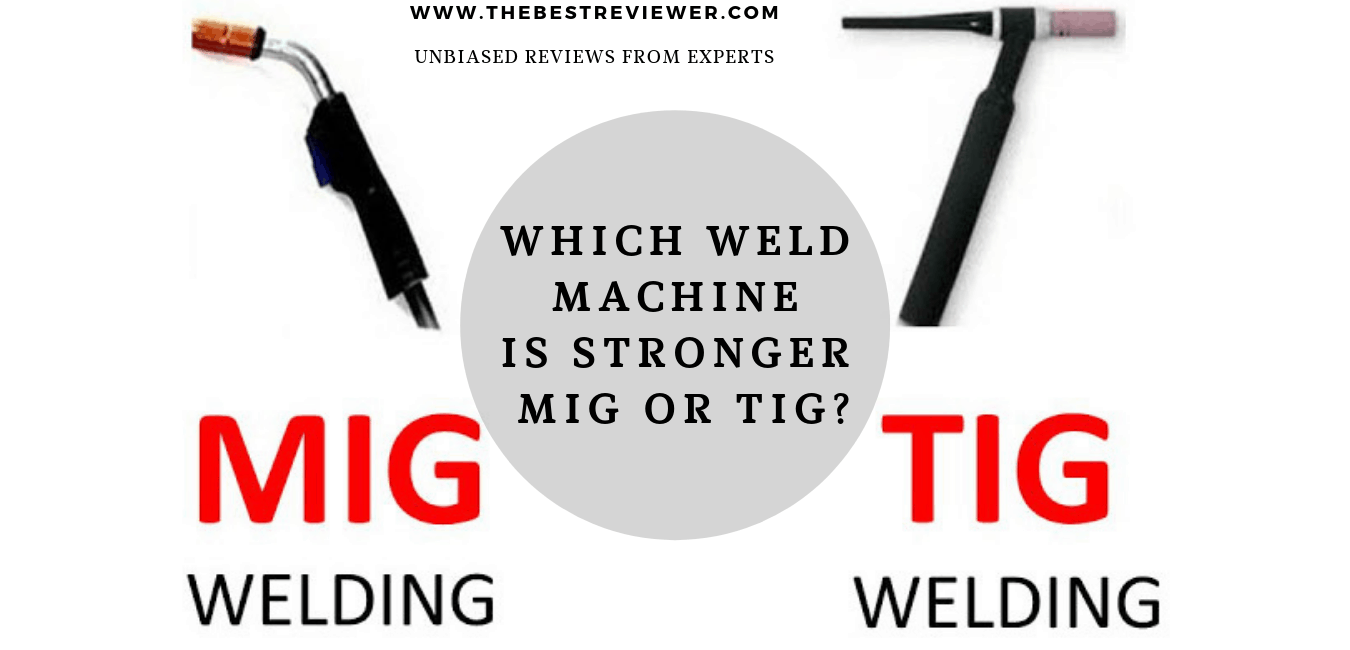A Thorough Discussion about the Differences between Tig Welders and Mig Welders
The welding of metals is the operation with which two metal joints are joined with the fusion or by filler metal. Nowadays there are many types of metal welding that are used depending on the effect to be obtained and on the basis of the metal in question. Among these, TIG and MIG welding are among the most important.
Contents
TIG welding:
TIG welding stands for “Tungsten Inert Gas” welding, in other words, it is an arc welding with an infusible tungsten electrode, to be carried out with or without filler metal.
This procedure allows obtaining quality joints but requires the presence of specialists able to operate the machinery in the best way.
TIG welding involves the use of a torch where the tungsten electrode is inserted, around which flows the protection gas that is carried on the melting bath. By moving the melting bath with the movement of the torch by the operator, welding is achieved.
This is a procedure which is now largely automated, for example for the production of parts such as welded tubes and for welding tubes to tube plates inside color exchangers. TIG welding is very appreciated even when the thickness of the material to be welded is very small.
MIG welding:
MIG welding, or “Metal-arc Inert Gas”, provides for the protection of the weld pool with a covering gas that comes out of the torch on the piece to be welded. It is a continuous thread process, which guarantees excellent productivity and allows working without slag.
Thanks to the continuous wires it is possible to have a higher current density than the processes that use coated electrodes, which translates into a greater degree of penetration compared to alternative techniques.
In other words, with MIG welding it is possible to fill the joint with a smaller number of passes. In MIG welding the operator can still keep the arc under direct observation, thus carrying out, compared to the submerged arc, a welding control similar to that of TIG welding.
Key differences between TIG and MIG:
TIG welding machine :
- Use argon gas.
- It is also called argon welding machine.
- Mainly it is used for welding stainless steel.
- Sound is small and does not spatter.
- The finish of welding can be beautiful.
MIG welding machine :
- Mainly uses carbon dioxide gas. (But if you use flux wire, it can be weld without gas. But It is recommended to use gas for the perfect finish.)
- It is also called a semi-automatic welding machine.
- It is often used for welding iron and mild steel.
- A wire comes out from the tip of the torch and is melted and welded together with the base material.
- Because welding speed is fast, when there are many welds, burrs can be welded efficiently.
Which Machine is Stronger MIG or TIG?
TIG welding can be applied to almost any metal, from steel to aluminum and exotic alloys. It is used when you have to make the pieces on the side and then finish the job with some welding.
It also serves to weld thin-gauge metals and has a stronger and corrosion-resistant finish. In addition, the system can be automated, mechanically controlling the gun and the metal.
MIG welding was developed to weld non-ferrous metals but can be applied in steel and aluminum structures. On the other hand, there are different ways to perform the soldier with MIG, manually, automatically or semi-automatically.
It can be used for small and medium thicknesses, and it is possible to weld in any position.
So, Which machine is Stronger MIG or TIG? That is one of the questions that most people ask, and the truth is that, neither one nor the other, the two are totally different, let’s analyze a little.
The first thing we should see is that material we are going to weld, knowing this we already have a large part resolved.
Let’s see some materials, what advantages and disadvantages each process brings, the idea is that you draw your own conclusions.
Iron:
When we are talking about production, the most productive equipment is the MIG, it is fast, it has very low operating costs, it behaves well in both thin and thick thicknesses, it does not require great skill of the welder, the wire does not leave scoria, in specific cases can stand out a TIG team, pressurized pipes, works in thin sheet thicknesses where an excellent finish is sought, without deformation of the base material.
A planer could well adapt to both equipment, but when we talk about the quality of work, the TIG stands out, in tasks such as reinforcing bars, doors, and blacksmithing in general, welded structures, without a doubt that the equipment to be used is MIG.
Stainless Steel:
This material is used in the production of container tanks, conduction pipes of different fluids, counter-tops, smoke extraction hoods, food industry, pharmaceutical, dairy, etc. It is clear that there are two determining factors: aesthetics and health.
we cannot have any pores or anything that can generate accumulation of bacteria, this quality can only achieve with the TIG process with direct current, the high costs of stainless steel make us try to work with thicknesses as thin as possible.
This being another factor that tilts the balance to the TIG process, due to its accuracy and stability of arc allows with very low currents to weld thicknesses that could go from 0,40 mm. Although in thicknesses above 2.00 mm we can achieve good results welding with MIG, it is clear that the equipment that stands out in the welding of stainless steels is the TIG.
Aluminum:
It is used in the manufacture of frames for motorcycles, bicycles, in the aeronautical, food, naval, automotive, etc. industries. In order to obtain good welding quality, we need to do it with a TIG equipment that delivers alternating current and high frequency.
The initial cost is quite high unlike the DC TIG equipment that is more accessible, but the acquisition of combination of these characteristics makes our work worthwhile and is in a certain exclusive way, since not everyone agrees to buy equipment of these characteristics.
On the other hand, the MIG process presents limitations, the torch must be modified so that the wire glides smoothly without producing winding’s, there are torches equipped with a traction motor in the handles that minimize this risk practically to zero,
The amperage of the equipment will depend on the thickness to be welded, which could be from a thin plate to a cylinder cover of a motor, for high amperage we will need a torch cooled by water so that it can withstand the high demands.
In conclusion:
It is clear that outstanding performing equipment is TIG. There are different materials for the different processes; here we have made a brief analysis of iron, stainless steel, and aluminum.
There are many qualities and brands of equipment in the market, we must take into account other factors such as the type of currently available resources, the budget we have, to purchase the equipment, the place where we weld is suitable or not for the use of a process with gaseous atmosphere protection.

